TexPREP and Stella Engage Young STEM Students in Systems Thinking
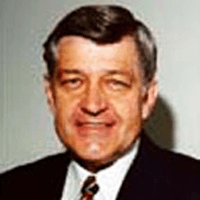 Ben Jurewicz
Ben Jurewicz
The more we understand the complexity of current world problems, the harder we cross our fingers that high school and college students are preparing to solve them.
Inspiring more students to study and enter careers in science, technology, engineering, and math (STEM) is one way to make sure the next generation is equipped for
the world they’re inheriting. As important, STEM students need to practice taking a big picture, Systems Thinking approach to understanding problems and finding
the best solutions.
We have to teach from the ground up using an example that they care about
“Systems Thinking is a core skill that needs to be taught as early as students are able to understand it,” says Ben Jurewicz, Adjunct Professor, Saint Mary’s University.
That opinion is the product of Jurewicz’s education which includes graduate work at MIT and long tenure as a systems engineer. “I’ve worked in aerospace; I was in the
Apollo program and was VP of Engineering at Sperry Corporation, and, as a consultant, applied system dynamics to IT, financial services, electronics, and other issues.
Through all those experiences, I encountered very few people who understand whole systems. It’s a real deficiency in our educational system.”
Jurewicz is building the Systems Thinking capacity of tomorrow’s engineers and scientists through the graduate level courses he teaches at Saint Mary’s University and TexPREP,
a San Antonio, Texas based summer education program designed for middle and high school STEM students. “Eight years ago, TexPREP added a fourth year, Prep IV, to the program
in order to teach students how to solve complex problems using a systems approach,” says Jurewicz. “We use Stella as a tool for understanding systems and encouraging the kind
of ‘What if’ thinking that students will need to become good scientists and engineers.”
Systems Thinking is a core skill that needs to be taught as early as students are able to understand it... it’s a real deficiency in our educational system
“We learned that we can’t teach Systems Thinking in the abstract,” says Jurewicz. “We have to teach from the ground up using an example that they care about.” TexPREP integrates
systems theory and water science classes. The water science class focuses on the physics and hydraulics of rainfall and consequent stream flow and uses the local Salado Creek
Watershed as an example system. “First, students learn how heavy rainfalls in the watershed area can lead to significant water flow in the stream and cause serious flooding,”
says Jurewicz. “Understanding how that process happens is the challenge for Systems Thinking.”
It has taken TexPREP several years to develop a teaching process that successfully teaches Systems Thinking concepts while engaging students. Today, the program takes a three
step approach that begins with a conceptual definition of a system.
We build Causal Loop Diagrams to see qualitative internal relationships and create a foundation for modeling quantitative relationships
“They learn that a system definition depends on an individual’s perspective and that it’s important to understand how the parts of a system contribute to the whole,” says Jurewicz.
Examples including cars, electronic devices, and human organizations are used to prompt discussion of how a system fits in any environment, its internal elements, and internal and
external relationships that influence behavior and outcomes. “We talk about how systems have a purpose and exhibit behavior that changes over time."
"We challenge students to predict behavior under given conditions and they quickly realize that isn’t as easy as it seems.”
Second, students learn to isolate elements of the system before being introduced to causes and effects. “Once students understand that causes and effects can move in the same or
different directions we talk about feedback loops and how they are driven by causes, effects, and time delays between them,” says Jurewicz. “We build Causal Loop Diagrams to see
qualitative internal relationships and create a foundation for modeling quantitative relationships.”
The model pushes students that aren’t natural ‘what if’ thinkers to take a more dynamic approach to problem solving
Third, a Stella model that includes stocks and flows teaches students how to quantify the impact of feedback loops and delays. “We start with a very simple model; water flowing in
and out of a bathtub or population levels with births as inflows and deaths as outflows, and run model simulations to explore behavior of stocks and flows over time,” says Jurewicz.
“These simple models demonstrate that outcomes are a consequence of systems structural relationships. They prepare students to take on the bigger challenge of modeling the behavior
of output as a consequence of a rainfall event in the watershed they’ve been learning about.”
Students begin their modeling project with a Causal Loop Diagram that defines it as an element in a much larger system.
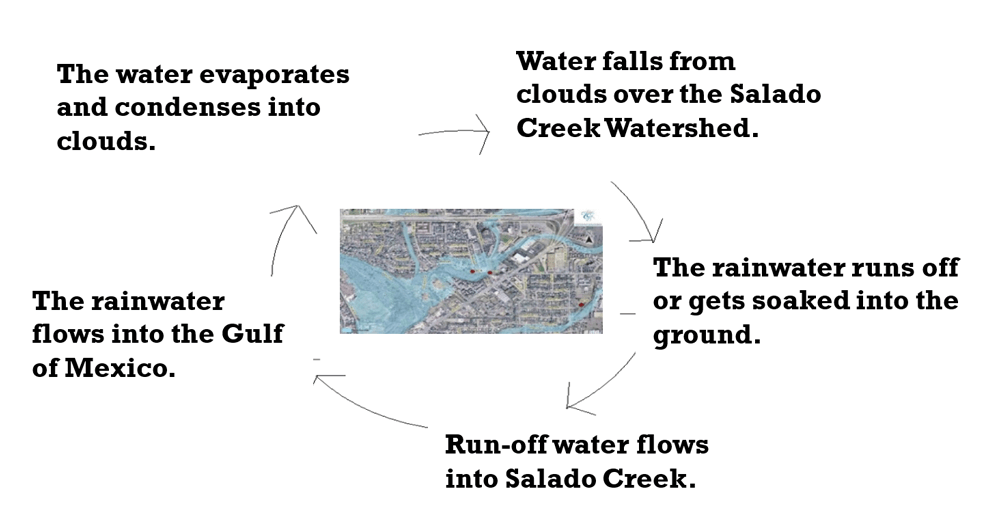 Causal Loop Diagram created by TexPREP students
Causal Loop Diagram created by TexPREP students
Their study of watershed behavior allows students to model the physics of water transport through the Salado Creek Watershed system. Their work begins with a very simple inflow and
outflow model that demonstrates water accumulation. They exercise the model to illustrate non-intuitive relationships among included variables.
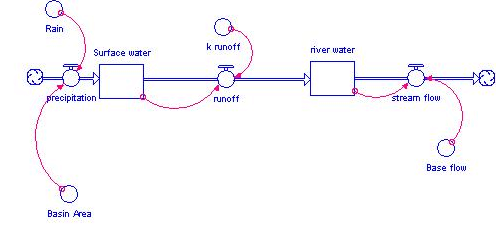 Simple Stella model of the Salado Creek Watershed
Simple Stella model of the Salado Creek Watershed
Students then add elements to develop a more realistic, complex model that is calibrated using real data from USGS Salado Creek Station 13. Students see that their model computes
peak stream flows that correspond closely with actual measured flows.
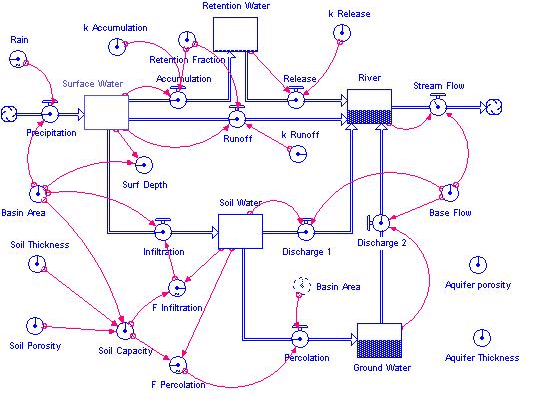 The final Salado Creek Watershed Stella model
The final Salado Creek Watershed Stella model
When their calibrated model is complete, students are challenged to explore “what if” scenarios. “Problems are rarely static,” says Jurewicz. “They are present when something causes
something else to happen. The model pushes students that aren’t natural ‘what if’ thinkers to take a more dynamic approach to problem solving.”
Students are learning that the broad view is as important as detailed, narrow views
Students are asked, for example, “What if more dams were built to increase the system’s water retention capacity?” Again, they use real data to show the impact of damming that adds
50% more retention and a delayed slow release. (Curve 1 is the flow curve with the added dam. Curve 2 is the original flow.)
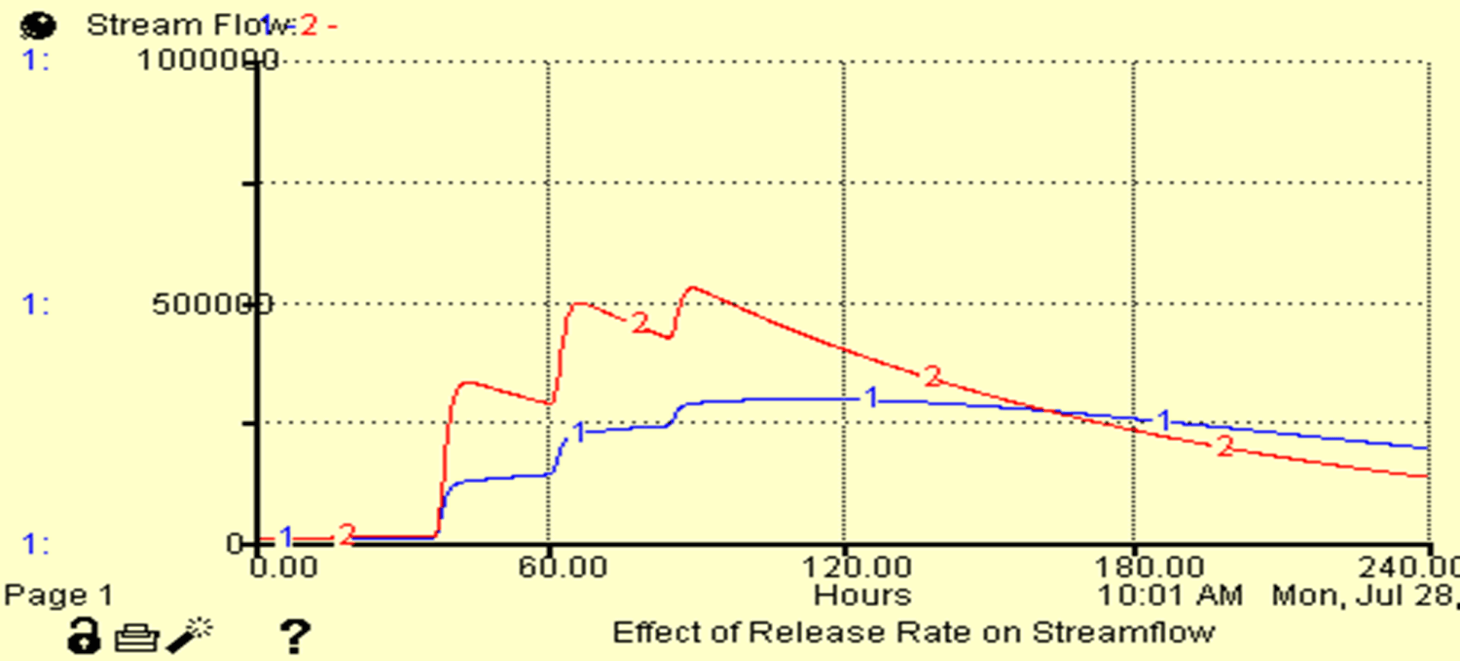 The impact of water retention and slow release
The impact of water retention and slow release
Students see that, with additional damming and slow release, stream flow drops below normal levels after about 160 hours and are challenged to explain why that happens. They also
explore the impact of rainfall at different rates and over different periods of time on flood levels and how watershed urbanization influences runoff and flooding.
Finding the best solution will require them to understand a whole system and all of its parts in order to identify and evaluate options
While TexPREP participants are all considered high-achieving students (they have to carry a B or above average), they come to Systems Thinking with a wide range of natural inclination
or interest. Even so, pre- and post-testing indicates that Prep IV instruction leads to real learning. “We test students on core concepts and see consistent positive results,” says Jurewicz.
That’s good news for a world filled with complex problems in need of well-trained engineers and scientists. “When people don’t understand the system that underlies a problem, they tend to
take the first solution that comes to mind and that’s often the wrong solution,” says Jurewicz. “Our students are learning that the broad view is as important as detailed, narrow views.
Finding the best solution will require them to understand a whole system and all of its parts in order to identify and evaluate options.”
This article uses material from Prototyping Systems Thinking Curriculum Development for Pre-College Students, Ben R. Jurewicz which was published in the Proceedings of the Third International
Conference on Complex Systems Design and Management, 2012.